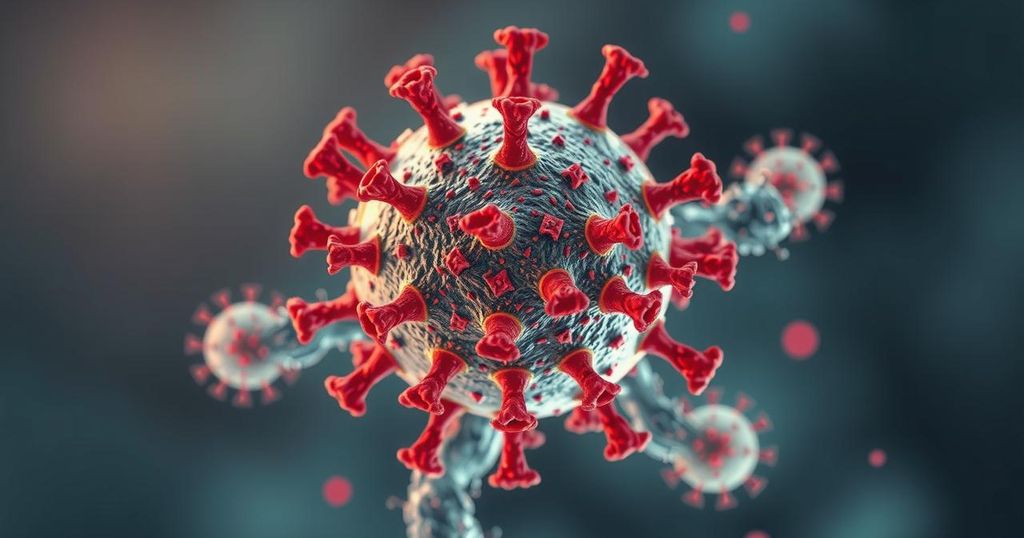The H5N1 avian influenza virus is causing increased concern as it infects multiple species including large mammals and humans. Recent events include fatalities among tigers and leopards in India, house cats in California, and a critical case involving a teenage girl in Canada. Experts stress the need for vigilant monitoring to track mutations and prevent an outbreak, highlighting the risk of the virus’s adaptation to human transmission.
Concerns regarding the H5N1 avian influenza virus are escalating as it has demonstrated an alarming ability to breach species barriers, evidenced by its recent attacks on large mammals and a human casualty. The virus has claimed the lives of three tigers, a leopard in India, and 11 house cats in California, while also critically affecting a 13-year-old girl in British Columbia, Canada. These recent incidents have raised fears about the potential for the virus to adapt and spread further among various species, including humans.
In India, at least three tigers and a leopard died after showing serious symptoms including limping and fever, with confirmed cases traced back to January. Concurrently, in California, a significant number of cat fatalities coincided with the ongoing spread of the virus among dairy farms across the United States. By the start of 2024, reports indicated 915 herds were affected across 16 states, highlighting the virus’s broad impact on wildlife and domestic animals.
The critical case of the teenage girl in Canada serves as a stark reminder of H5N1’s potential threat to human health. Beginning with mild conjunctivitis and a fever, her condition rapidly deteriorated, necessitating advanced respiratory support. Although she has since recovered, experts are apprehensive about the mutations observed in her case, which may facilitate more effective human adaptation of the virus. The New England Journal of Medicine has underscored the importance of continuous surveillance to monitor such mutations and track their spread.
Experts warn that if H5N1 continues to adapt and cause cross-species infections, it poses a significant risk. Anurag Agrawal, dean of BioSciences and Health Research at Ashoka University, stated, “If there’s anything to worry about, it should be avian influenza that is seeing a jump from birds to animals to humans.” In light of these developments, the need for rigorous monitoring of the virus’s evolution and potential impacts on public health is more paramount than ever, as variations in the virus can catalyze wider transmission among humans.
In response to these troubling trends, health agencies emphasize the necessity of robust tracking systems and vigilant surveillance protocols to detect cases promptly. Notably, Dr. Pragya Yadav, a senior scientist at the National Institute of Virology in Pune, emphasized that “it is due to the active surveillance that we have put in place that we were able to detect cases quickly.”
Given the recent mortality rates in both wildlife and humans, the global health community must remain diligent in monitoring the H5N1 virus and its transmission patterns. Increased research efforts and cooperation among different nations may facilitate a better understanding of this evolving threat and enhance preparedness against future outbreaks.
The resurgence of H5N1 (avian influenza virus) poses severe concerns as it has recently exhibited a capacity to infect a diverse range of species beyond its typical avian hosts. Historically, H5N1 primarily affected birds; however, recent instances of infections in tigers, leopards, house cats, and humans indicate a troubling shift in its transmission dynamics. With human cases remaining relatively rare but increasingly severe, experts advocate for heightened surveillance and research into the virus’s mutations to prevent potential widespread outbreaks.
In summary, the spread of the H5N1 avian influenza virus raises significant alarm as it has demonstrated the ability to cross species barriers with lethal consequences. Recent infections in various animal species and one severe human case underscore the urgent need to monitor and understand this pathogen more closely. Experts recommend enhanced surveillance measures to track potential mutations and protect public health from escalating threats. As health authorities ramp up their response efforts, public awareness and scientific collaboration remain critical in addressing this evolving health risk.
Original Source: www.hindustantimes.com






